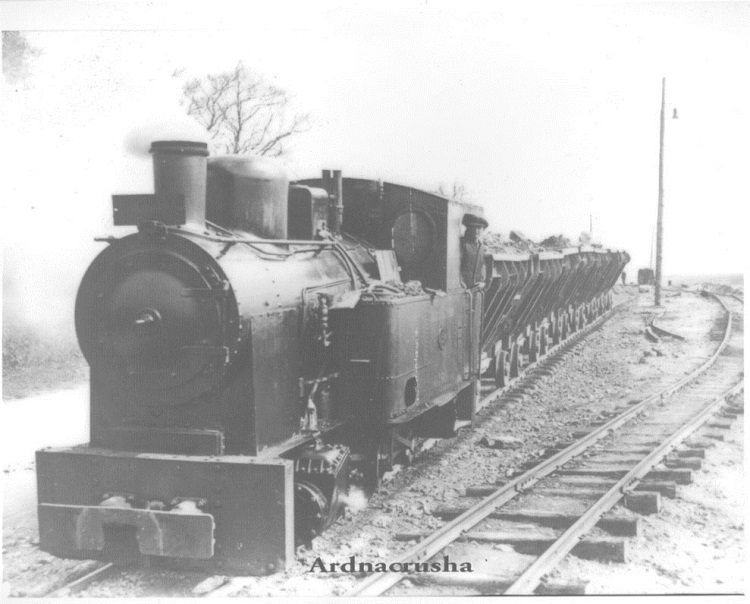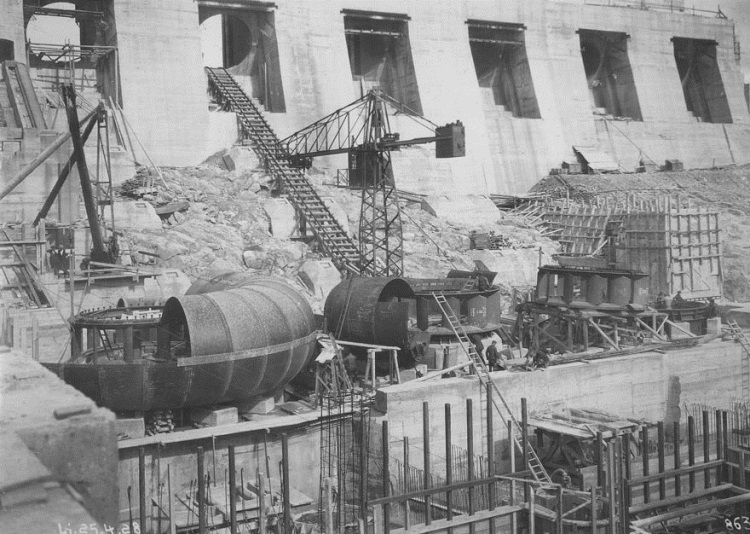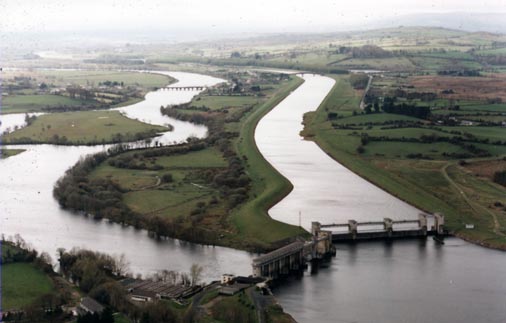|
|
| Zeile 5: |
Zeile 5: |
| | It was an enormous undertaking and many doubted whether Ireland would ever need all the electricity the scheme could supply. Siemens’ involvement as the principle contractor was critical in persuading politicians and the public that it all made sense. The German imprint on the work, which began in 1925 and finished in 1929, was unmistakable. The generating station that houses the four huge turbines is, with its very high-pitched roof and rows of dormer windows, obviously Germanic. But Irish people took great pride in Ardnacrusha too: as well as being an economic success, it was a great psychological boost. It served as a model for other large-scale electrification projects worldwide.<br><br> | | It was an enormous undertaking and many doubted whether Ireland would ever need all the electricity the scheme could supply. Siemens’ involvement as the principle contractor was critical in persuading politicians and the public that it all made sense. The German imprint on the work, which began in 1925 and finished in 1929, was unmistakable. The generating station that houses the four huge turbines is, with its very high-pitched roof and rows of dormer windows, obviously Germanic. But Irish people took great pride in Ardnacrusha too: as well as being an economic success, it was a great psychological boost. It served as a model for other large-scale electrification projects worldwide.<br><br> |
| | Fintan O’Toole | | Fintan O’Toole |
| − | [[Datei:IRELAND_Ardnacrusha_3.jpg|750px|thumb|left|Ardnacrusha. In 1929 it supplied over 95 % of the country’s energy needs. Today it generates about 1% of national electricity demand. © Courtesy ESB Archive]]{{#newBox:}} | + | [[Datei:IRELAND_Ardnacrusha_3.jpg|750px|thumb|left|Ardnacrusha. In 1929 it supplied over 95 % of the country’s energy needs. Today it generates about 2% of national electricity demand. © Courtesy ESB Archive]]{{#newBox:}} |
| − | {{#Galerie:Weitere Bilder|[[Datei:IRELAND_Ardnacrusha_4.jpg|Construction work in Ardnacrusha. The Scheme was one of the largest engineering projects of its day. © Courtesy ESB Archive]],[[Datei:IRELAND_Ardnacrusha_5.jpg|Construction work in Ardnacrusha. The Scheme was one of the largest engineering projects of its day. © Courtesy ESB Archive]],[[Datei:IRELAND_Ardnacrusha_6.jpg|Construction work in Ardnacrusha. The Scheme was one of the largest engineering projects of its day. © Courtesy ESB Archive]],[[Datei:IRELAND_Ardnacrusha_8.jpg|Construction work in Ardnacrusha. The Scheme was one of the largest engineering projects of its day. © Courtesy ESB Archive]],[[Datei:IRELAND_Ardnacrusha_7.jpg|President Cosgrave of the Executive Council with his wife Louisa, sons Liam and Michael at the official opening of Ardnacrusha Power Station on 22 July 1929. © Courtesy ESB Archive]],[[Datei:IRELAND_Ardnacrusha_9.jpg|Ardnacrusha. The “Shannon Scheme” included the generation, transmission, distribution and supply of electricity on a national basis. It served as a model for other large scale electrification projects worldwide. © Courtesy ESB Archive]],[[Datei:IRELAND_Ardnacrusha_10.jpg|Ardnacrusha. In 2002, The “Shannon Scheme” was conferred with two major world Heritage Awards, the Milestone Award recognizing the scale of the project and how it became a model for large electrification projects worldwide; and The Landmark Award, which recognises worldwide civil engineering projects that have made a significant contribution to society. © Courtesy ESB Archive]]}}{{#newBox:}} | + | {{#Galerie:More Photos|[[Datei:IRELAND_Ardnacrusha_4.jpg|Construction work in Ardnacrusha. The Scheme was one of the largest engineering projects of its day. © Courtesy ESB Archive]],[[Datei:IRELAND_Ardnacrusha_5.jpg|Construction work in Ardnacrusha. The Scheme was one of the largest engineering projects of its day. © Courtesy ESB Archive]],[[Datei:IRELAND_Ardnacrusha_6.jpg|Construction work in Ardnacrusha. The Scheme was one of the largest engineering projects of its day. © Courtesy ESB Archive]],[[Datei:IRELAND_Ardnacrusha_8.jpg|Construction work in Ardnacrusha. The Scheme was one of the largest engineering projects of its day. © Courtesy ESB Archive]],[[Datei:IRELAND_Ardnacrusha_7.jpg|President Cosgrave of the Executive Council with his wife Louisa, sons Liam and Michael at the official opening of Ardnacrusha Power Station on 22 July 1929. © Courtesy ESB Archive]],[[Datei:IRELAND_Ardnacrusha_9.jpg|Ardnacrusha. The “Shannon Scheme” included the generation, transmission, distribution and supply of electricity on a national basis. It served as a model for other large scale electrification projects worldwide. © Courtesy ESB Archive]],[[Datei:IRELAND_Ardnacrusha_10.jpg|Ardnacrusha. In 2002, The “Shannon Scheme” was conferred with two major world Heritage Awards, the Milestone Award recognizing the scale of the project and how it became a model for large electrification projects worldwide; and The Landmark Award, which recognises worldwide civil engineering projects that have made a significant contribution to society. © Courtesy ESB Archive]]}}{{#newBox:}} |
| | {{#Video:http://lbs.goethe.de/mediawiki/images/8/8f/IRELAND_Ardnacrusha_x264.mp4|Video of Ardnacrusha|[[Ardnacrusha © Courtesy ESB Archive]]}}{{#newBox:listbox}} | | {{#Video:http://lbs.goethe.de/mediawiki/images/8/8f/IRELAND_Ardnacrusha_x264.mp4|Video of Ardnacrusha|[[Ardnacrusha © Courtesy ESB Archive]]}}{{#newBox:listbox}} |
| | ==Visitor Information== | | ==Visitor Information== |
Version vom 15. Mai 2014, 11:36 Uhr
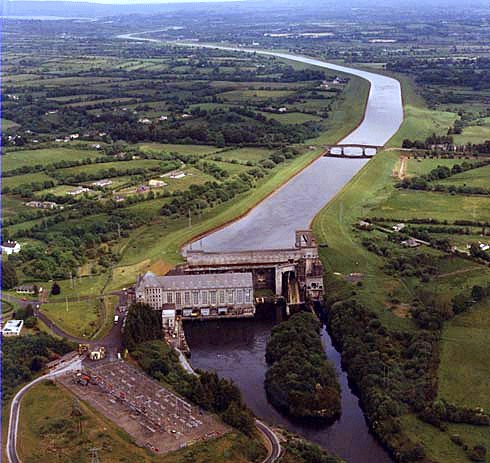
Ardnacrusha and the “Shannon Scheme” were officially opened on 22nd July, 1929. © Courtesy ESB Archive. Aerial shot: Liam Hogan
The hydroelectric plant on the River Shannon in County Clare, built by the German firm Siemens-Schuckert, can be described as a milestone in Irish history. Today it still generates power for ESB.
When Ireland became independent in 1922, most of the country had no access to electricity. The idea of harnessing the power of the Shannon had been around since the 1840s but seemed too expensive. It took shape when an Irish engineer, Thomas McLaughlin (1896-1971), joined Siemens-Schuckert in Berlin in 1922. He proposed to the new Irish government the “Shannon Scheme”, the world’s first national electricity system, that would cost a fifth of the State’s annual revenue budget.
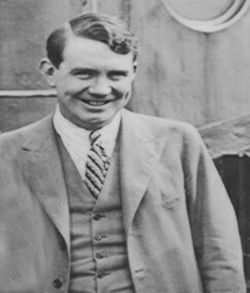
A portrait of Thomas McLaughlin. In 1927, two years after construction had begun, McLaughlin was appointed first Managing Director of newly established ESB. © Courtesy ESB Archive
It was an enormous undertaking and many doubted whether Ireland would ever need all the electricity the scheme could supply. Siemens’ involvement as the principle contractor was critical in persuading politicians and the public that it all made sense. The German imprint on the work, which began in 1925 and finished in 1929, was unmistakable. The generating station that houses the four huge turbines is, with its very high-pitched roof and rows of dormer windows, obviously Germanic. But Irish people took great pride in Ardnacrusha too: as well as being an economic success, it was a great psychological boost. It served as a model for other large-scale electrification projects worldwide.
Fintan O’Toole
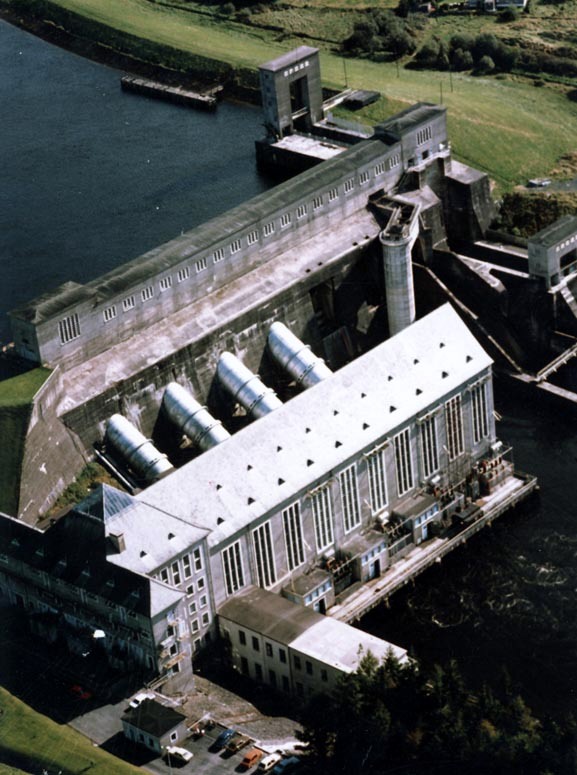
Ardnacrusha. In 1929 it supplied over 95 % of the country’s energy needs. Today it generates about 2% of national electricity demand. © Courtesy ESB Archive





